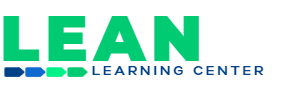Key Takeaways
- Lean thinking for meaningful work involves adopting a philosophy of continuous improvement and eliminating waste in all business processes.
- Building a culture of respect and collaboration is crucial, valuing the input and expertise of all employees to leverage diverse perspectives for innovative solutions.
- Implementing value stream mapping can help visualize the product life cycle and identify inefficiencies, providing a clear roadmap for streamlining operations.
- Focusing on delivering value to the customer, and utilizing pull-based systems to manage workflow effectively, can lead to significant reductions in overproduction and inventory costs.
Effective business practices are no longer about maintaining the status quo. In an era of rapid technological innovation and evolving customer expectations, organizations must be agile, adaptable, and relentlessly focused on delivering value. The Lean methodology, with its emphasis on continuous improvement and respect for people, offers a compelling roadmap towards operational excellence. But what does Lean thinking for meaningful work mean, and how can it redefine our approach to business practices? This article delves into the key principles of Lean methodology and explores how they can drive organizational transformation.
Embracing Lean Principles for Organizational Transformation
At the heart of Lean methodology is the philosophy of continuous improvement. This means relentlessly pursuing the elimination of waste in all business processes. It involves setting up regular review cycles and feedback loops to ensure every aspect of the organization aligns with its efficiency goals. A disciplined approach is crucial to keep continuous improvement as a top priority.
Lean thinking also requires cultivating a culture of respect and collaboration. This means valuing the input and expertise of all employees, fostering an environment where collaborative problem-solving is the norm. This approach not only enhances morale but also leverages diverse perspectives for innovative solutions. A culture of respect for people is a cornerstone of Lean methodology, where the expertise of all employees is valued, and working collaboratively is encouraged.
Implementing value stream mapping is another critical step in the Lean journey. This involves identifying and mapping out all steps of a product or service’s lifecycle, from inception to delivery. The visualization this provides aids in pinpointing inefficiencies and redundancies that do not add value to the customer, thereby offering a clear roadmap for streamlining operations.
Of utmost importance in Lean methodology is the focus on delivering value to the customer. This involves deeply understanding customer needs and aligning business processes to meet these needs more effectively. It also includes leveraging customer feedback to continuously refine products and services, thereby maximizing customer value while minimizing waste.
Finally, Lean methodology advocates for the shift from traditional push-based models to pull-based systems to manage workflow. This approach, where work only starts in response to customer demand, leads to significant reductions in overproduction and inventory costs. It also bolsters efficiency and responsiveness, making it a key component of Lean thinking for meaningful work.
Streamlining Operations with Lean Tools and Techniques
Lean thinking for meaningful work extends beyond principles to practical tools and techniques that can drive efficiency and value in your operations. These tools are designed to organize the workplace, manage work visually, solve problems at their roots, optimize service delivery, and reduce waste. Let’s explore how you can leverage these Lean tools for rethinking your business practices:
Implementing 5S for Workplace Organization
The 5S methodology—Sort, Set in order, Shine, Standardize, Sustain—is a foundational Lean tool for organizing the workplace. It’s not just about cleanliness or orderliness; it’s about creating a work environment that fosters efficiency and safety. By sorting necessary items, setting them in an organized manner, maintaining cleanliness, standardizing these practices, and sustaining the discipline, you are fostering a work culture that is primed for efficiency and continuous improvement.
Adopting Kanban for Visual Management
Visual management is a powerful Lean technique, and Kanban is one of the most effective tools for this. A Kanban board visualizes the flow of work, limits work-in-progress, and enhances operational flow. It is a tool that helps teams see the bottlenecks in their process, facilitating an agile response to changing priorities. In essence, Kanban boards make the abstract concept of work flow tangible, enabling teams to manage their work more effectively.
Utilizing Root Cause Analysis for Problem Solving
Lean thinking for meaningful work is about solving problems—not just their symptoms, but their root causes. This is where Root Cause Analysis comes in, specifically the “5 Whys” technique. By asking “why” five times, you can typically drill down to the core of a problem. This method ensures that your solutions address the real issues at hand, making them effective and long-lasting, rather than just patching up symptoms.
Applying Value Stream Mapping to Service and Administrative Processes
Value Stream Mapping isn’t just for manufacturing processes. It’s equally effective in optimizing service delivery and administrative workflows. By mapping out all the steps in these processes, you can identify non-value-adding steps. Once these are spotted, strategies can be formulated for their elimination or improvement. This way, you ensure that every step in your process adds value to the customer, aligning with the Lean principle of maximizing customer value.
Leveraging JIT (Just-In-Time) Production to Reduce Waste
Just-In-Time (JIT) production is another Lean tool that aims to reduce waste. The principle is simple: produce and deliver finished goods just in time to be sold. This approach minimizes inventory costs and reduces waste from overproduction. However, implementing JIT is not without its challenges. It requires accurate forecasting, reliable suppliers, and flexible production processes. But when done right, JIT can significantly streamline your operations and enhance your efficiency.
Incorporating these Lean tools and techniques into your business practices can bring about significant improvements in operational efficiency, customer value, and ultimately, your bottom line. Remember, Lean thinking for meaningful work isn’t a one-off project—it’s a continuous journey of learning and improvement.
Advancing Lean Learning for Sustainable Growth
While implementing Lean tools and techniques can drive immediate improvements, sustaining and expanding these gains requires a commitment to Lean learning. This involves fostering a learning environment, leveraging technology, applying Lean across the organization, measuring performance, and building strategic partnerships. Let’s delve into these key aspects of advancing Lean learning for sustainable growth:
Fostering a Learning Environment for Continuous Lean Education
Learning is at the heart of Lean thinking. Continuous education in Lean principles is critical for everyone in your organization, from frontline staff to top-level management. Creating a culture that values learning means providing regular training opportunities, encouraging the sharing of insights, and recognizing individuals and teams who apply Lean thinking to their work. This approach not only builds Lean expertise but also fosters a mindset of continuous improvement that is crucial for sustainable growth.
Leveraging Technology for Lean Management
Modern technologies, like AI and data analytics, can play a significant role in enhancing your Lean practices. These tools can provide deeper insights into your operations, predict trends, and facilitate more informed decision-making. For example, data analytics can reveal hidden inefficiencies in your processes, while AI can automate routine tasks, freeing up your team to focus on value-adding activities. Embracing technology in your Lean journey can help you stay ahead in an increasingly competitive business landscape.
Expanding Lean Beyond the Factory Floor
Lean thinking for meaningful work goes beyond the factory floor. You can apply Lean principles to a wide range of business processes, from administrative functions to customer service to product development. For instance, Lean can help streamline administrative workflows, improve customer interactions, and expedite the development of new products. By expanding Lean across your organization, you can improve efficiency, reduce costs, and enhance customer satisfaction in various departments.
Measuring and Analyzing Performance for Continuous Improvement
Measurement and analysis are critical for continuous improvement in Lean management. By setting clear metrics and regularly reviewing performance against these benchmarks, you can identify areas for improvement. This data-driven approach can help you track the impact of your Lean initiatives over time and make necessary adjustments to your strategies.
Building Strategic Partnerships for Lean Transformation
Lean transformation is not a solo journey. Collaborating with suppliers, customers, and other stakeholders can add significant value to your Lean initiatives. These partnerships can facilitate shared learning, synchronize processes, and create a more responsive and integrated supply chain. By building strategic partnerships, you can accelerate your Lean transformation and achieve sustainable growth.
In conclusion, advancing Lean learning for sustainable growth requires a holistic approach that goes beyond tools and techniques. It involves creating a culture of learning, leveraging technology, expanding Lean across the organization, measuring performance, and building strategic partnerships. So, as you embark on your Lean journey, ask yourself: How can you foster a culture of continuous Lean education in your organization? How can you leverage technology to enhance your Lean practices? And how can you build strategic partnerships to accelerate your Lean transformation?




